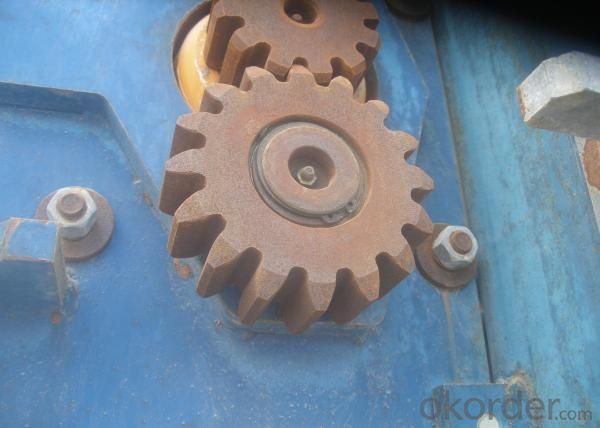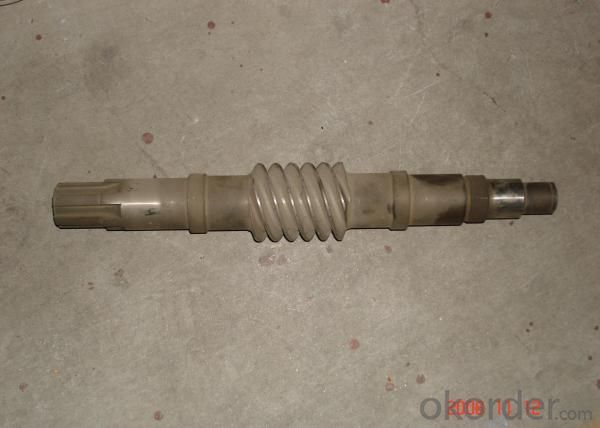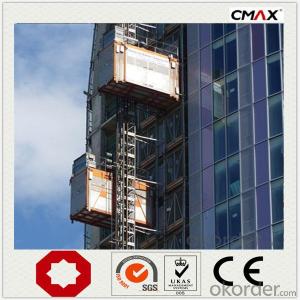Spare Parts for Hoist
- Loading Port:
- China Main Port
- Payment Terms:
- TT or L/C
- Min Order Qty:
- -
- Supply Capability:
- 100000m/month set/month
OKorder Service Pledge
OKorder Financial Service
You Might Also Like
Spare Parts for Hoist:
1.Starting and braking are steady with no pounding.
2.The lifting or falling speed be contolled
Outstanding Features Spare Parts for Hoist:
1.Construction elevators are widely used at the sites of industrial and civil construction, bridge construction, underground construction, large chimney construction, ship industry and so on.
Being suitable for the vertical transport of materials and people, they can also be used as permanent / semi-permanent electric elevators and in various sites like warehouses and high towers.
2.This series of construction elevators, which are known for their stable performance, reliable safety,
easy transportation and strong adaptability, can enhance work efficiency and reduce workers’ labor intensity.
3. Top and bottom limit, cage door electrical and mechanical interlock safety device, landing door electrical and mechanical interlock safety device, anti-exceeding top device, safety hook, bottom buffer spring, anti-overload device, etc.
The products are consitent with China National Satandards, also reach Hong Kong COP Stards and Europe EN Standards.
Excellent quality and service are what we actually supply with.
Packaging & Delivery
Package: wooden boxes in containers.
Period of shipment: 10 days after receipt of the buyer's advance payment.



- Q: The working principle of construction elevator
- How the elevator works: The main bearing structure is self-formed system, which is low on construction. It more driven by force, drive devices are installed on the hanging basket, through the gear and rack drive system, the mutual cooperation, so as to realize the rise and fall of the elevator.
- Q: How do construction suspension scaffolding be handled in the people's elevator?
- The shelf of the discharge platform is separated from the outer scaffolding and set up separately! Can't connect together
- Q: Can construction elevators be taken by people or by goods
- ?yes, you can! It is to pass the authority authority to issue use card to be able to use! Construction lifts are also called elevators
- Q: Is it possible to use a building hoist to lift various materials simultaneously?
- <p>Yes, a building hoist can be used for lifting multiple materials at once, provided the total weight does not exceed the hoist's load capacity. It's crucial to ensure that the materials are securely fastened and balanced to prevent tipping or damage. Always follow the manufacturer's guidelines and safety regulations to avoid accidents and ensure the safe operation of the hoist.</p>
- Q: 6 layer of brick and concrete construction project, have tower crane still need construction elevator?
- Very cow! Six floors of brick and concrete construction projects have tower cranes. No construction lifts are needed.
- Q: This question asks about the method to determine the maximum weight a building hoist can safely support.
- <p>Calculating the maximum load capacity of a building hoist involves several factors. First, consider the hoist's mechanical design and the manufacturer's specifications, which provide the rated load capacity. This is the maximum weight the hoist is designed to handle. Next, assess the condition of the hoist, as wear and tear can reduce its capacity. Additionally, consider the strength of the supporting structure and the safety factor, which is typically a multiplier of the rated load capacity to ensure safety. For example, if the hoist is rated for 1000 kg, a safety factor of 1.5 means the actual maximum load should not exceed 667 kg (1000 kg / 1.5). Always consult with engineers and follow local regulations and standards for precise calculations.</p>
- Q: Describe the process of utilizing a computer control system for operating a building hoist.
- <p>To use a computer control system for a building hoist, first ensure the system is properly installed and integrated with the hoist's mechanical and electrical components. Begin by powering on the control system and checking for any error messages that might indicate a problem. Once the system is ready, input the desired parameters such as load weight, lifting height, and speed settings. Use the control panel to initiate the hoist's movement, monitoring the progress on the system's display. Adjust the hoist's operation in real-time as needed, ensuring safety protocols are followed. Regularly check system diagnostics for maintenance alerts and address any issues promptly to maintain optimal performance.</p>
- Q: There are differences between the construction elevator and the construction elevator
- Construction lifter and building construction elevator, manned cargo construction machinery is a frequently used in construction, because of its unique enclosure structure make it take up both comfort and safety, construction lifter is usually used with tower crane on the construction site, the average load in 1-3 tons, running speed is 1 to 60 m/min. There are many kinds of elevators in construction, there are no two kinds of weights and weights in the way of operation, and they are controlled by manual control and automatic control. You can also add inverter and PLC control modules as needed, and also add floor calling devices to the peace layer.
- Q: This question asks whether a building hoist can be utilized for lifting both fragile and non-fragile items.
- <p>Yes, a building hoist can be used for lifting both fragile and non-fragile objects. However, it is crucial to ensure that the hoist is equipped with the appropriate attachments and safety measures to handle fragile items without causing damage. For non-fragile objects, the hoist can be used more freely, but still, safety protocols must be followed to prevent accidents. The key is to use the hoist within its weight capacity and to adhere to all operational guidelines to ensure the safe and effective lifting of all types of objects.</p>
- Q: How many meters is the wall of the construction elevator?
- It seems that there is no, just the local code, you search for the construction elevator acceptance specification look, I have searched this aspect before, now forget.
Send your message to us
Spare Parts for Hoist
- Loading Port:
- China Main Port
- Payment Terms:
- TT or L/C
- Min Order Qty:
- -
- Supply Capability:
- 100000m/month set/month
OKorder Service Pledge
OKorder Financial Service
Similar products
Hot products
Hot Searches
Related keywords












































